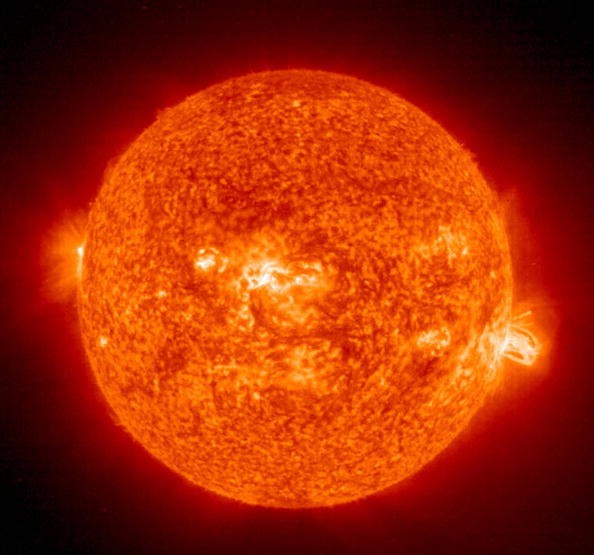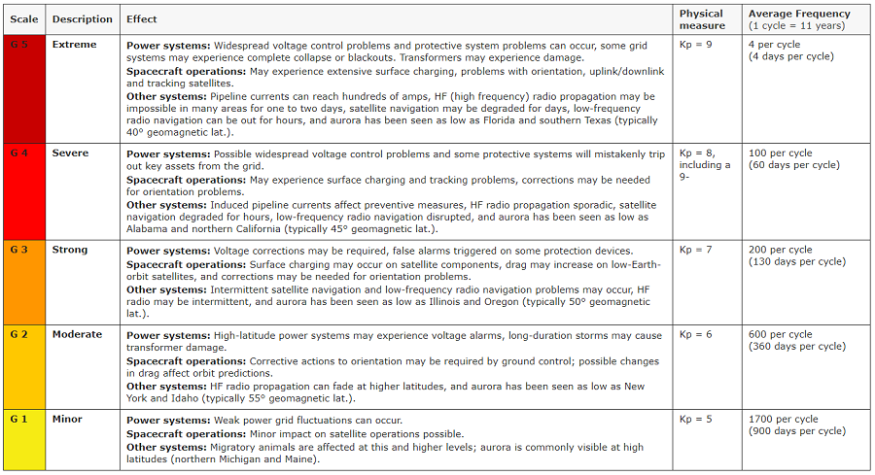A G1-class geomagnetic storm is expected to hit the Earth on January 15, according to NOAA's Space Weather Prediction Center (SWPC).
According to the SWPC's most recent report, the region of influence will be predominantly poleward of 60 degrees Geomagnetic Latitude. On Earth, minor power grid oscillations can occur in this region. It is conceivable to have a minimal influence on satellite activities in orbit.
Mother Nature may light up the skies farther south than average across the northern tier of the United States, such as northern Michigan and Maine; aurora might be seen at high latitudes.

In their latest Forecast Discussion, the SWPC stated, "Enhanced circumstances are projected late on January 15 when a recurring, negative-polarity coronal hole high-speed stream (CH HSS) becomes geoeffective."
Coronal holes may form at any position on the Sun, although they are more prevalent and persistent during solar minimum years. Although coronal holes are most common and stable near the solar north and south poles, they can develop and extend to lower solar latitudes.
It's also conceivable for coronal holes to form independently or for a polar hole extension to branch off and become an isolated structure. High-speed solar wind streams, often known as "CS HSS," are long-lasting generators of persistent coronal holes.
A compression zone, a co-rotating interaction region (CIR), arises as the high-speed stream interacts with the comparatively slower ambient solar wind.
The CIR will be observed to lead the CH HSS from the perspective of a stationary observer in interplanetary space, according to the SWPC.
Strong CIRs and the quicker CH HSS can generate periods of geomagnetic storming to the G1-G2 (Minor to Moderate) levels in the Earth's magnetosphere; however, unusual examples of stronger storming may occur.
Related Article : Expert Warns 'Situation Worse than Covid' if Government Ignores Solar Flare Defense
Forecasts

Using a range of solar data collected by spacecraft, NOAA forecasters try to figure out an influence a geomagnetic storm may have. Assuming Earth is experiencing the impacts of a coronal hole, paired with the predicted effects of a coronal mass ejection, a more severe impact and more violent geomagnetic storming might occur.
Forecasters can predict when the high solar wind from a coronal hole arrives at Earth by analyzing data from the DSCOVER and ACE satellites. To calculate when the increased solar wind will arrive at Earth, they search for a few characteristics in the data:
In addition to providing magnificent aurora, these solar storms may also cause significant damage to electronics, electrical networks, and satellite and radio communications.
Carrington Event
The "Carrington Event" happened on September 1-2, 1859, when a severe geomagnetic storm attacked Earth during Solar Cycle 10. This event is also known as the 1859 occurrence. The biggest geomagnetic storm on record was triggered when a CME struck the Earth. Residents in California thought the Sun rose early.
eople in the northeastern United States could read a newspaper at night from the aurora's intense brightness. People as far south as Hawaii and south-central Mexico could see the aurora in the sky because the storm was so severe.
A significant electrical and communication line failure resulted from the occurrence; telegraph networks worldwide failed, with some telegraph operators suffering electric shocks.
According to a June 2013 analysis by Lloyd's of London and Atmospheric and Environmental Research (AER) in the United States, losses in the United States may surpass $2.6 trillion, or nearly 15% of the country's yearly GDP, if the Carrington event occurred in modern times.
Space Weather

While the National Oceanic and Atmospheric Administration (NOAA) and its National Weather Service (NWS) are best known for weather forecasts, they are also responsible for "space weather." While private companies and other agencies monitor and forecast space weather, the Space Weather Prediction Center is the official source for alerts and warnings of the space environment (SWPC).
The SWPC is a service center of the NWS, which is part of NOAA and is situated in Boulder, Colorado. They monitor current space weather activities 24 hours a day, 365 days a year, and are one of nine National Centers for Environmental Prediction (NCEP).
Also Read ?: Gigantic Asteroid Will Pass By Earth in 7 Years, Do We Have Defense Against Such Threats
For more cosmic news, don't forget to follow Nature World News!
© 2026 NatureWorldNews.com All rights reserved. Do not reproduce without permission.





